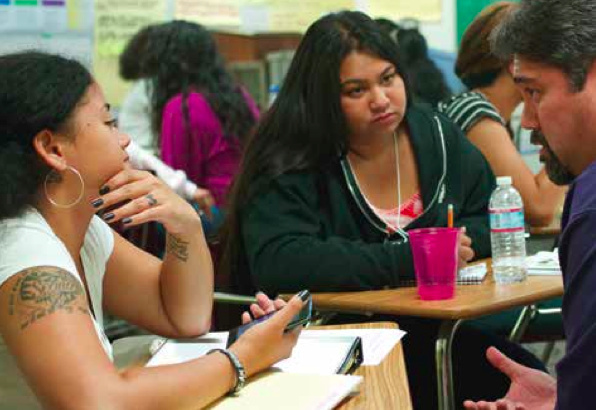Pacific Islanders are often grouped with the much larger population of Asians-Americans. For one, their countries of origin are in relative proximity, and joining forces helps create the critical mass to advocate for shared policy goals.
But a new report released Tuesday morning underscores just how much more difficult the Pacific Islander experience can be when it comes to education and health, for example.
“Those are some of the issues that in many ways are undergirded by poverty,” said Iosefa Aina, an associate dean at Pomona College and a board member for Empowering Pacific Islander Communities, or EPIC.
EPIC, which is based in Los Angeles, co-authored the report with frequent collaborator Asian Americans Advancing Justice. The groups say the report is one of the most detailed looks at Pacific Islanders living in California and other parts of the mainland.
Key findings show:
- During the recession, the number of unemployed Pacific Islanders rose more than any other racial group — 123 percent — and the number living in poverty grew by 56 percent.
-
Rates of diabetes and obesity are higher than the national average. Aina said that has a lot to do with sedentary lifestyles and consuming processed food because of the low cost and accessibility.
- About 18 percent of Pacific Islanders, including Native Hawaiians, have a bachelor's degree, lower than the national average. In this regard, they share some similarities with some immigrants from southeast Asia for whom rates of educational attainment also lag the general population.

Joanna Lee, a principal researcher with Asian-Americans Advancing Justice, said the report will help show policymakers that the Asian & Pacific Islander community is not a monolith.
While the number of Native Hawaiians and Pacific Islanders living in the US now tops 1.2 million, that's "masked under the 18 million or 17 million Asian Americans that live in the country," she said.
"So it's really important to look at this data to really understand the community and understand how to better serve the community," Lee said.
California is home to the largest Native Hawaiian and Pacific Islander population outside of Hawaii. Aina said that many households took root in the state after World War II , when people moved to the mainland to serve in the military and were followed by relatives.
Population growth has been steady in California over the last decade. The Native Hawaiian and Pacific Islander community has expanded 29 percent to nearly 286,000 people.
Despite some discouraging news in the report, Aina described the potential for change, especially within the community's large segment of young people. (The median age is 26.5 for Pacific Islanders, the lowest among racial groups.)
“What we see is an opportunity to train our young people, to build the capacity within our community to do research, become doctors and lawyers," Aina said.
Read the full report here:
A Community of Contrasts- Native Hawaiians and Pacific Islanders in the United States














